Remains of Reflections
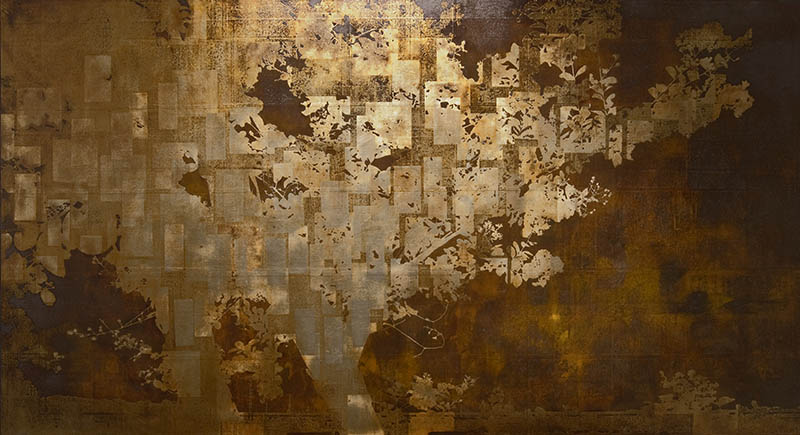
rectangle
2015
pigment ink, metal leaf, metal powder and urushi on washi
H120 x W227 cm
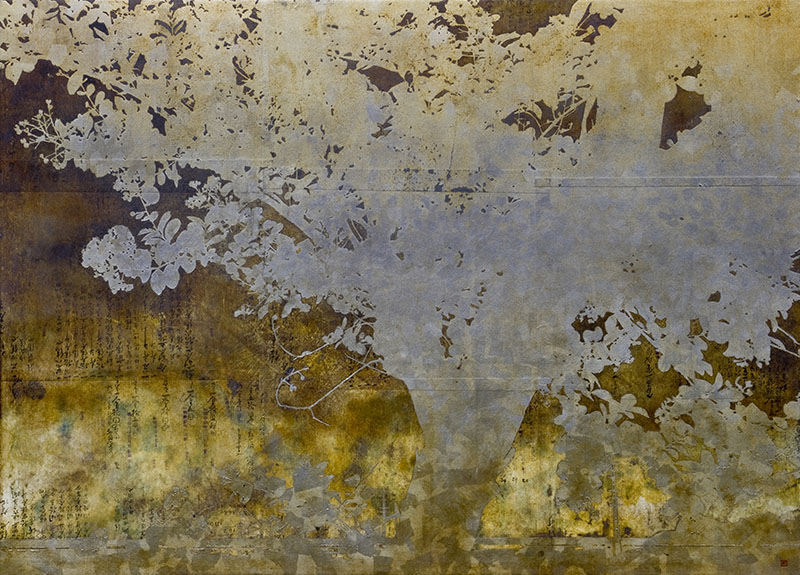
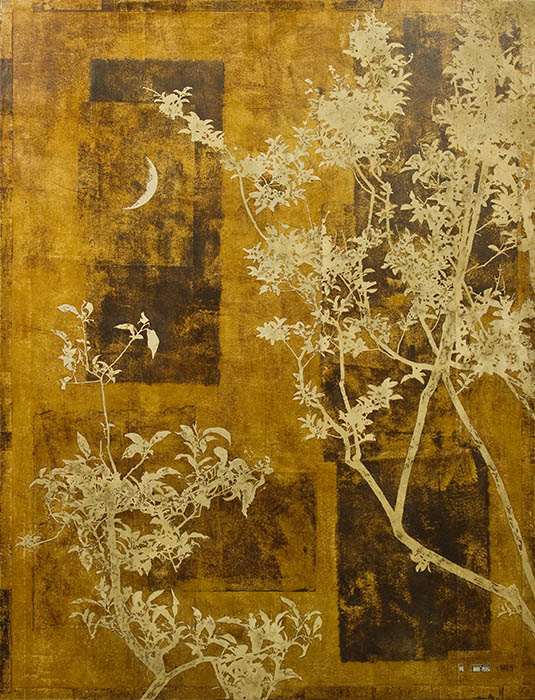
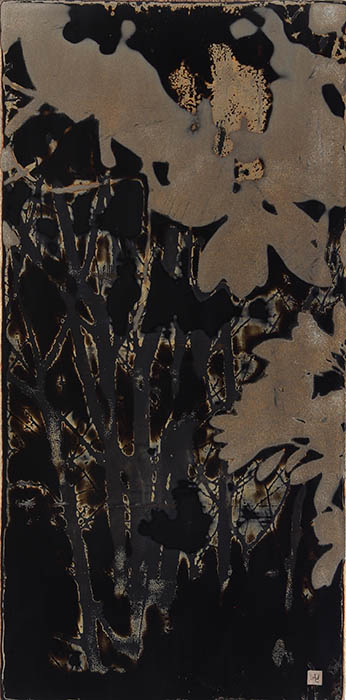
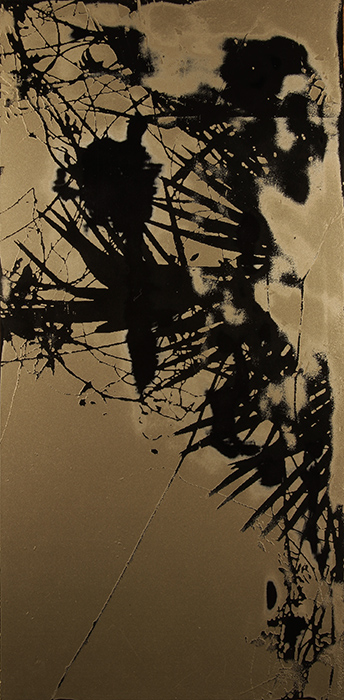
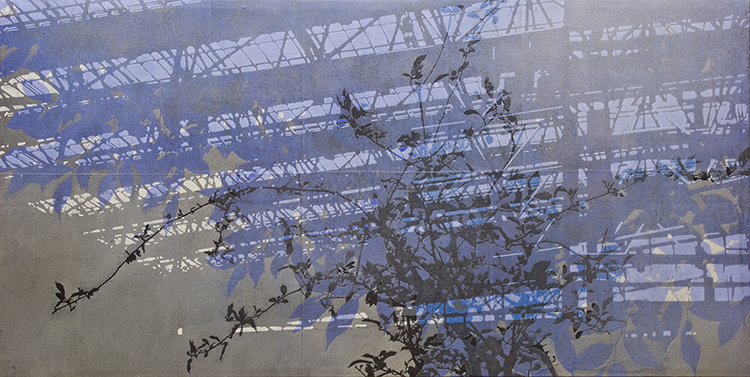
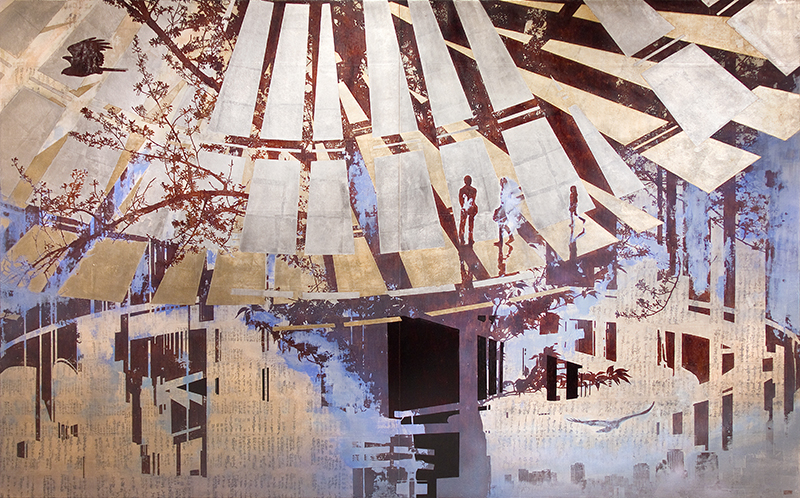
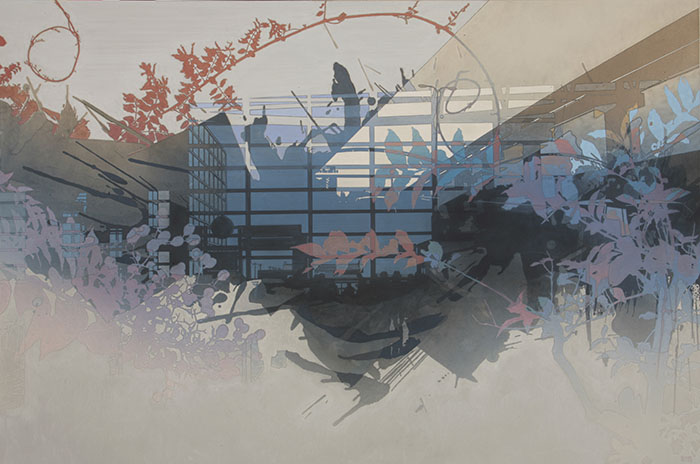


Diamond
2015
pigment ink, metal leaf and urushi on washi
H65 x W91 cm

Mélange
2015
pigment ink, metal powder,metal leaf and urushi on washi
H145 x W112 cm

Modest
2012
Pigment ink, metal power and urushi on wood board
H40 x W20 cm

Frame
2012
Pigment ink, metal power and urushi on wood board
H40 x W20 cm

2014
pigment ink on washi
H29 x W84 cm

1854
2015
pigment ink on washi
H162 x W259 (cm)

Flux
2016
pigment ink on washi
H61 x W92 (cm)

2011
pigment ink on washi
H45 x W190 (cm)
Introduction by Keiko Fukai
There are many lacquer artists who create two-dimensional works with lacquer, whether they are traditional or contemporary works; however it is very rare to find Japanese style painters who employ lacquer techniques into Japanese style paintings called Nihonga.
Osawa Takuya, who graduated from the Japanese Painting Department of Tokyo University of the Arts, has been developing a style that expresses nature or city-scapes with a composite technique that employs lacquer with pigments used in traditional Japanese painting. He says that if he can push beyond the restrictions of using lacquer in his paintings he hopes to achieve new expressions. (Raw lacquer is thick and more difficult to apply and manipulate than the traditional pigments used in Japanese style painting.)
The metallic surfaces created with metal leaf or powder reminds us of Japanese folding screens or paintings of the Momoyama and Edo periods; but those surfaces are very flat. However in Osawa’s “layered paintings,” which combine lacquer with metallic pigments. the brownish color of raw lacquer creates a greater depth and shadows on the surfaces; and this also expresses the passage of time which is important in his work.
Although Osawa’s layered style of painting is original and unique, he is not yet satisfied; and he continues to explore new possibilities of his composite technique.
Since I was a child I have liked shiny metal or glass objects. I was especially attracted to the surfaces of clear stemware that reflected complex distorted surroundings. When I was 7 years old, I drew that image with watercolor. Though my parents praised that painting, I tore it up in front of them, because I wasn’t satisfied with my painting.
As a painter. early on I was motivated to use urushi (Japanese lacquer) in my Japanese style painting. I wanted to create deep, rich. shiny surfaces that would pull viewers into the painting. However, I realized there was no one in the Department of Japanese Painting who could teach me how to use urushi in my paintings. So I began to research, and I learned about a technique of combining Japanese style painting and urushi decoration that has existed in Japan since the 9th century. An example is the Eight Kinds of Mythological Beings (including the world famous Ashura) in Kofukuji Temple that was created 1200 years ago by the Buddhist sculptor Manpuku, using the kanshitsu technique. (This is a method of applying layers of hemp cloth between layers of lacquer to create a form.) The surface of this sculpture was painted by the Japanese style painter Hitano Ushikai. Today it is very rare to find paintings that employ these composite techniques. Although we still have the same materials, such metallic leaf and powder, which are still used. But forming and painting using this old composite technique is almost a lost form of art. However, this is now one of my concepts, although my composite style of painting is not as shiny as typical lacquer ware.
I have discovered that there is a big difference between the application of metal leaf on paper than when applied on wood. Even though metal leaf is thinner than paper, when the metal leaf is applied over a thick wooden board, it looks like a heavy metal block.
I am interested in this optical illusion because the uncertainty of visual perception is another concept I try to express in my paintings by creating several layers.
I frequently get inspiration from the large windows in commercial buildings because they reflect not only the surrounding environment of buildings, trees, cars, lights or people, but they also show what is inside of those windows.
What people see may reflect the state of their minds or emotions; some people probably see only what is inside of the building, while others see the reflections. So, my layered paintings express these uncertainties of visual perception.
Some of these layered paintings are created by my original composite techniques with urushi and Japanese style painting; but many of them are painted with mineral pigments that are more typically used in Japanese style paintings.
Now I am the father of two children, and I understand how disappointed parents are when children tear up their paintings in front of them. And now I regret that I cannot see my first painting that depicted the stemware which reflected its surroundings!
